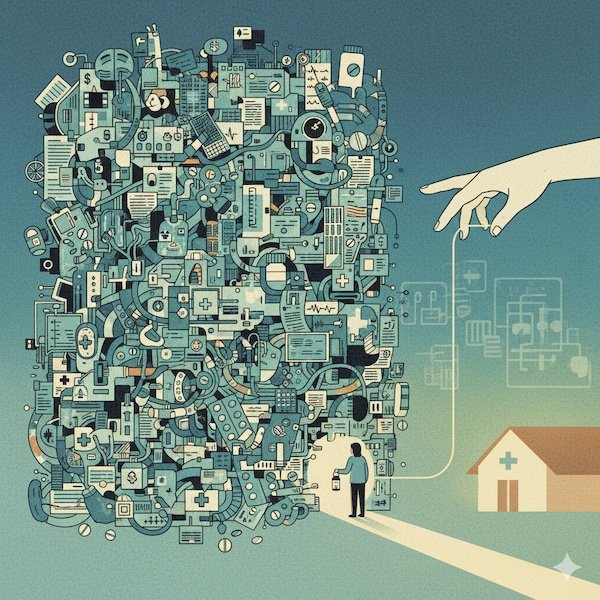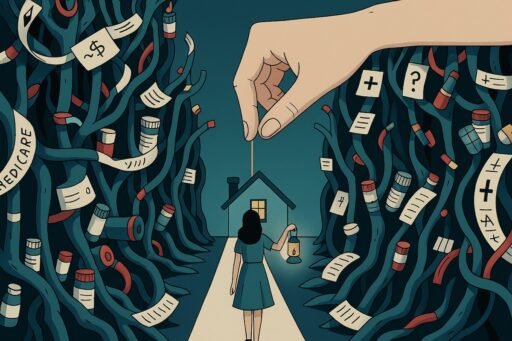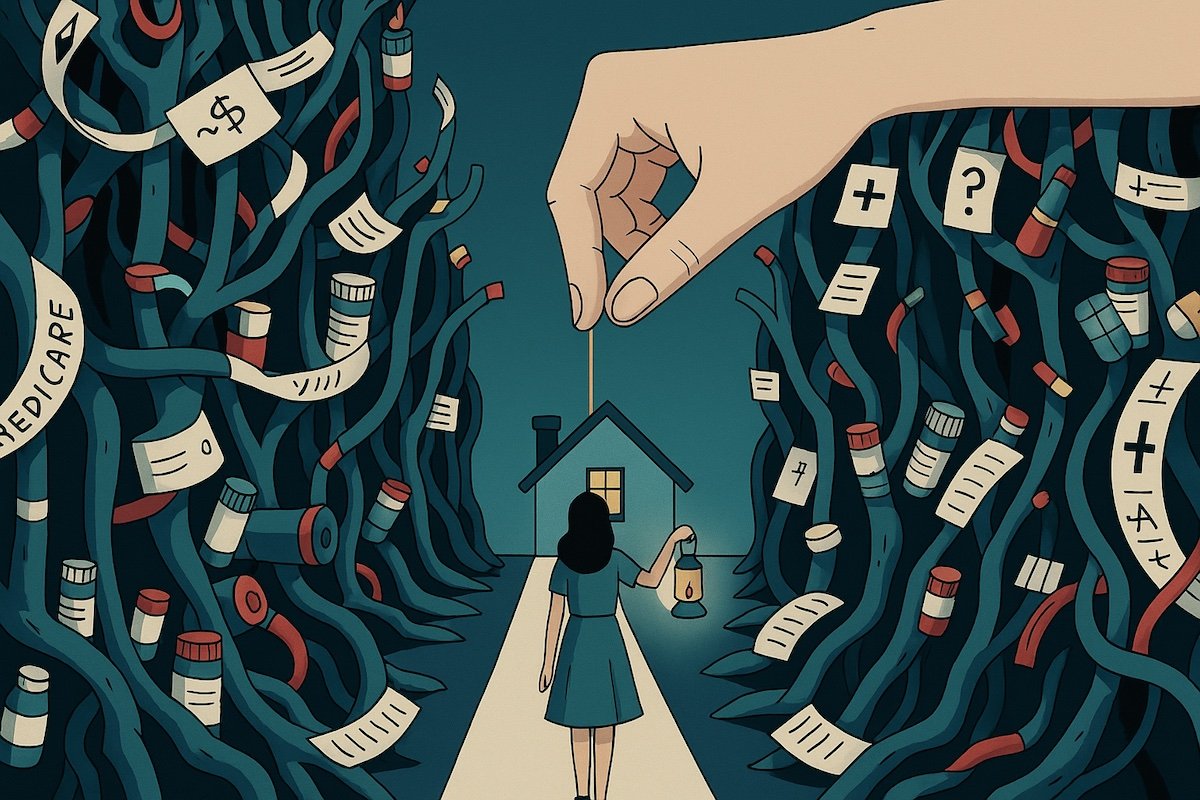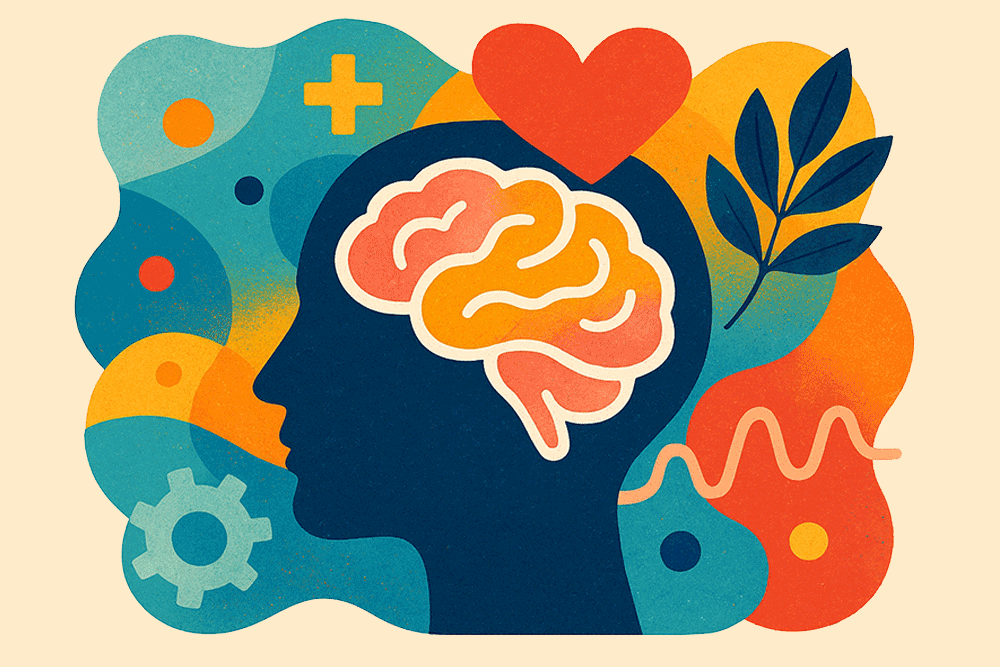Table of Contents
Why is healthcare so confusing, you ask? Read on. Remember the times you found yourself sitting in a new doctor’s office, holding a clipboard with pages filled with questions that don’t make sense to you. How many times have you stared at an insurance bill that reads like it requires an advanced degree to understand? Well, you’re not alone. Modern healthcare is a complex system built on good intentions, bureaucratic layers, financial incentives, and decades of piecemeal reform. Most people aren’t confused because they lack information. They’re perplexed because the system is intentionally designed to be confusing.
You can feel knowledgeable in every other part of your life and still get lost here. Healthcare has its own language, economics, timelines, and logic. It runs on codes and claims, referrals and networks, portals and authorizations. And if you don’t live inside the industry, the system treats you as if you’re supposed to know already how it all works. But you’re not supposed to. And you shouldn’t have to.
This article won’t give you a miracle cure for navigating the entire system, but it will provide you with something better: a human map. A way to understand why the system feels so complicated and how to approach it with more clarity, confidence, and peace.

1. The System Was Built for Institutions, Not Patients
The modern healthcare system evolved for hospitals, insurers, medical groups, pharmaceutical networks, and government programs—not for the everyday person. I hate to break it to you, but you were never the user they optimized for. You were the afterthought.
Every form you fill out, every portal you log into, every bill you receive is a reflection of that reality. When systems grow around institutions, not people, those institutions become the “primary users.” Patients become the last link in a long chain. That’s why so much of healthcare communication feels like reading someone else’s internal paperwork.
Understanding this isn’t cynical; it’s clarifying. It means the confusion isn’t your fault. You’re navigating someone else’s workflow.
2. Insurance Adds a Second Entire System on Top of the First
Why is healthcare so confusing? Imagine trying to understand the DMV (Department of Motor Vehicles) while another organization—one you don’t see—quietly controls the rules in the background. That’s American healthcare.
Insurance companies:
- Decide what is “medically necessary”
- Negotiate prices behind closed doors
- Create networks and out-of-network traps
- Approve or deny care before you ever receive it
Most people assume insurance is simply a payment method. It’s not. It’s a parallel system with its own algorithms, vocabulary, and power.
Healthcare confusion increases whenever two large systems overlap. Here, they overlap everywhere.
3. Medical Language Was Never Meant for Non-Experts
Even the words themselves become obstacles. “Prior authorization.” “Allowed amount.” “Explanation of benefits.” “Co-insurance.” “Formulary.” “Shared savings programs.”
Far from being intuitive terms, they’re legacy terms—holdovers from internal documentation that eventually slipped into public life, confusing everyone equally.
And when you add clinical vocabulary, even well-educated people can feel like they’ve suddenly lost the ability to read.
If you feel overwhelmed, that reaction is rational. You’re being asked to navigate two different languages at once: medicine and insurance.
4. Fragmentation Makes Everything Feel Like Starting From Scratch
You go to one doctor. You fill out the same forms at another. You upload insurance cards repeatedly. You tell your story again and again, to nurses, techs, receptionists, specialists, labs, billing centers, and automated portals.
Do people talk to each other? Sometimes they do. Often they don’t.
Healthcare in the U.S. is not one system. It is:
- Thousands of hospital groups
- Thousands of insurance plans
- Independent practices
- Corporate-owned clinics
- Labs
- Pharmacies
- Government programs
You experience healthcare as a single journey. But behind the scenes, it isn’t one system at all, it’s dozens of disconnected departments, software systems, and offices that rarely communicate with one another. What feels like one experience to you is actually a chain of separate silos on their side.
Fragmentation creates confusion because you’re constantly being passed between disconnected systems.
5. Money Drives Decisions More Than Anyone Wants to Admit
This is the quiet part of healthcare that shapes outcomes while often being overlooked.
Much of what feels confusing is actually economic:
- Why did the doctor send you to that specialist?
- Why does your insurance only cover those labs?
- Why is the cash price lower than the “insured” price?
- Why does one hospital charge three times more than another for the same scan?
Behind almost every healthcare choice lies a financial structure that’s not visible to you, making the industry opaque and frustrating.
6. Why Is Healthcare So Confusing? You Still Deserve Clarity
Even inside this messy reality, you deserve:
- transparent pricing
- understandable bills
- clear explanations
- guidance without condescension
- a path through the maze
You deserve a healthcare system that’s built for humans. And while we can’t reconstruct the entire healthcare industry overnight, we can develop tools that help people navigate it with greater understanding, confidence, and calm.
This article is the start of a new series: a simple, human blueprint for navigating healthcare without jargon, anxiety, or shame for what you “should” already know, because your health shouldn’t feel like a secret.
Covered California Healthcare Coverage
If you’re in California (like we are) and want a clearer view of your coverage options, Covered California offers a straightforward starting point for understanding plans, networks, and costs.







